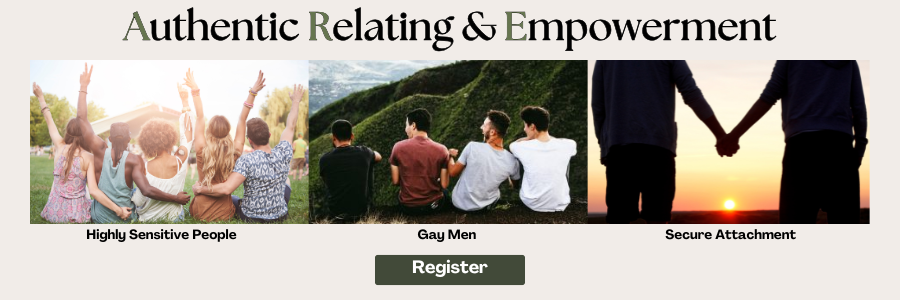I remember the first self-help book I read when I was 15 years old. It was called “Feel the Fear and Do It Anyway” by Susan Jeffers. The book had such a lasting impact on me that this is the motto I have chosen to live my life by.
The feeling of regret of not doing something because of fear is far worse for me than the feeling of facing fear. However, the traumas I have experienced both in childhood and throughout the course of my life have created a significant inner conflict within me. I still face my fears and stand by the motto, but trauma has made it much more challenging.
I have done a lot of deep inner work that involved healing trauma and toxic shame, and I am finally seeing the light at the end of the tunnel. I wanted to write this blog to share my journey and tell the story of how my relationship to fear has changed and how I am restoring myself back to an inner sense of safety that was robbed from me by trauma.
When talking about life after trauma and how to restore our internal sense of safety, we are essentially unpacking our relationship with fear.
Trauma is a wound that occurs from a threatening experience in our lives, but more so, how we experience the trauma will largely be influenced by the meaning we make of that experience. This is important to consider because what may cause one person trauma may not cause trauma to someone who does not make the same meaning of the experience.
It is important to note that I don’t just define trauma as a significant life-threatening event such as war, rape, violence, and other life experiences where your physical safety has been threatened. I am also attachment and interpersonal trauma-trained and realize that trauma is also caused by injury to our ability to connect and feel safe with the people we love (especially our primary caregivers in childhood). This would include but not be limited to experiences such as neglect, abandonment, rejection, not feeling seen or heard, highly critical parenting, being bullied, not feeling like we belong, etc.

In order to understand fear, we need to understand a bit more about the impact trauma has on our nervous system and our behaviour.
Let’s take a deeper look at trauma and how humans typically respond to trauma.
When we experience a traumatic event, it impacts our nervous system significantly. It is within our nervous system that we also experience fear.
Post-trauma can be a very destabilizing time. One that is usually characterized by coping mechanisms such as hypervigilance, hyper-independence, social isolation, aggression, people pleasing, and many other coping mechanisms humans use to try to restore safety to their traumatized nervous system.
In order to understand these coping mechanisms more clearly, it’s important to understand the 4 trauma responses the nervous system may have during and after a traumatic experience.
The 4 trauma responses are fight, flight, freeze, and fawn.
It is important to note that all of the trauma responses are characterized by hypervigilance. This is essentially a sense of being scared, overly observant, and on guard when around people. This may place the person with unresolved trauma in states of high arousal, fear, untrusting, and a general sense that the world is not a safe place.
The fight trauma response is when we become aggressive and protective of ourselves from a place of defensiveness. We likely employ the fight trauma response when we feel unsafe and are unable to flee the threatening situation. This may look like aggression, violence, combative language, or posturing body language.
The flight trauma response is when we physically flee the experience, and if we didn’t have the opportunity to flee during the traumatic event, we might employ this strategy when we perceive threats in our environment post-trauma. This may look like ghosting, hyper-independence, social isolation, or lone-wolf syndrome.
The freeze trauma response is when we become paralyzed, numb, or dissociated from reality as a means of coping with the intensity within our nervous system. We likely employ the freeze trauma response unconsciously when we feel unsafe and unable to flee the threatening situation. This may look like dissociation (checking out emotionally from the body as a way of coping with the stressor), over-identification with the mind/thoughts, or rigid and tense musculature in the body.
The fawn trauma response is usually more conscious in nature and is used to avoid conflict or other potentially threatening people or situations. We may learn pleasing behaviours as a way of avoiding conflict and coping with the threats we perceive in our environment. This may look like people pleasing, self-abandonment, poor boundaries, not saying what you really mean, or going along with what others want you to do even when you don’t want to.
*Regardless of the trauma response you may find yourself using as a way to cope with unresolved trauma, if you want to restore yourself back to an internal sense of safety, you must affirm yourself that it’s okay to feel scared. Fear is a natural part of the human experience, and many of us use defense mechanisms not to have to be with our fear, and this can keep us stuck. If we are minimizing, blaming, getting angry, denying, or projecting our fears, then we are not learning the skill of fear tolerance. Affirming yourself every day through this healing process that it is okay to be scared can be the dose of self-compassion and self-kindness that is necessary for a successful inner transformation of your unresolved trauma.

So how does all this relate to fear and lacking an internal sense of safety?
As you can see from the trauma responses, the underpinning of each trauma response is hypervigilance. Trauma changes how we perceive the world and the people around us. When in states of hypervigilance, everything gets filtered through the lens of fear, and we are on guard to protect ourselves from further harm.
If we want to change our relationship with fear, we usually need to heal unprocessed trauma and begin to restore safety within ourselves. Restoring safety within ourselves usually restores our sense of safety in the world.
Let’s take a deeper look into fear and see what fear is actually communicating to us.
Fear is so potent for most of us that it has the power to stop us from doing what we want to do.
In order to actually understand and work through fear, we have to understand what fear is, and how we can have a different relationship to it.
According to Holistic Psychologist Dr. Nicole Lepera, these are the 5 Things To Understand About Fear:
- We’ll always feel it: fear is a part of the human experience. Any time we step out of our comfort zone, we’ll feel fear. This is our mind and body trying to protect us and keep us safe.
- Fear isn’t a sign to stop doing something: it can actually be a sign that we’re meant to do it.
- Fear-based thoughts aren’t necessarily true: fear-based thoughts tend to be worst-case or crisis-based scenarios that are often exaggerated. Just because you think something doesn’t mean it’s going to happen or that it’s true at all.
- Failure isn’t something to fear: we all fear failure, and this is unfortunate because failure gives us countless lessons and provides an opportunity for growth. All great things have come from a series of failures.
- The most fulfilled people can feel fear and do it anyway: fulfilled people lean into fear and tell themselves, “I can do difficult or uncomfortable things.”
Here are the 6 strategies I used on my own trauma-healing journey that significantly changed my relationship with fear and began to restore an inner sense of safety:

1. Practice presence
Presence is the foundation for all healing. Without being present, we are living in the past or the future where fear and anxiety live. If we want to feel less fear, we need to take refuge in the present moment.
Fear keeps us out of the present moment, and the present moment is what keeps us out of fear.
This is the predicament of fear. We desperately don’t want to feel it and be present with ourselves in states of fear, but it is this very presence that we are afraid of that is going to restore us back to a sense of safety. This is because when we are present,t we are not in thoughts because all thoughts occur in the past and future. We can’t think thoughts when we are present – it’s impossible. The key to becoming present is to develop a relationship with what is in the present moment, and this happens to occur in the body. So, if we want to learn to change our relationship with fear, we need to learn to become embodied in states of presence.
If you want to learn more about presence and embodiment, I wrote a whole book on it called Be The Space – A Loving Guide to Creating Inner Space Through Present Moment Awareness
It is within the inner space that we take refuge and realize that fear is merely thoughts we are thinking that are either from the past or anticipating the future. This is the birthplace of most suffering.

2. Befriend your nervous system
When you get embodied through practicing presence, you will likely start to meet your nervous system. The nervous system is where your emotions are experienced and stored (if you didn’t allow them to be felt in the past).
We want to befriend this part of ourselves because it is our guidance system. Not being connected to your nervous system is like being on a journey without a compass. You will easily lose direction and get lost. The nervous system is always offering you valuable data and it is up to us to befriend it, collect the data, and act accordingly.
A great place to start befriending your nervous system is to get present, connect with your breath, and feel your emotions.
Check out this powerful guided meditation I created to help you befriend your nervous system: Embodiment and Trauma Release Guided Meditation

3. Feel your emotions
This tends to be the most challenging one for most people. So many of us are completely terrified and consumed by our emotions that we just choose to not feel them. We avoid, numb, distract and even dissociate from our emotions.
In my humble opinion, this is the reason why we live in such an angry world where there is a significant lack of empathy. All these unprocessed emotions we don’t want to feel are living in our bodies and influencing our thoughts and behaviours.
So it is absolutely essential to make time each day to slow down and feel your emotions. I have some tips to share on how to do this:
First, start by reading this short blog by Tara Brach, where she teaches her RAIN method of emotion processing (Recognize, Allow, Investigate, Nurture).
Before moving into the RAIN method, I would first do some 4-2-7 breathing to slow down the nervous system so you can feel calm enough to begin processing the emotions. Some emotions come in so fast and intensely that it may feel impossible to be present with them without first calming the nervous system with some intentional breathing.
4-2-7 breathing is where you breathe in the nose for 4 seconds, hold the breath for 2 seconds, and then breathe out slowly through a little hole in the mouth for 7 seconds. Do 5 of these breaths and then start the RAIN method.
Within the recognition stage of the RAIN method, I recommend using the feelings wheel to recognize what feeling you may be experiencing.
4. Communicate with your chakras every day and affirm their safety
This one is huge for me. My chakras (energy centers within the body) are storage containers for energy, emotions, and memories of past experiences. I didn’t realize how each one of these chakras has a life of its own within my body. It was my job to develop a relationship with each chakra and understand its need for safety.
I wake up each morning and the first thing I do is communicate with my chakras and begin the process of affirming safety to each chakra.
Here are some examples of affirmations you can use for each chakra:
Root:
I am safe to belong
I am safe to be scared
I am safe to not know
I am safe in this moment
Sacral:
I am safe to be flexible
I am safe to be sexual
I am safe to be creative
I am safe to feel my emotions
Solar Plexus:
I am safe to be confident
I am safe to honour my needs
I am safe to be powerful
I am safe to have boundaries
Heart:
I am safe to be vulnerable
I am safe to open my heart
I am safe to give and receive love
I am safe to trust
Throat:
I am safe to express myself
I am safe to use my voice
I am safe to be heard
I am safe to speak my truth
Third eye:
I am safe to listen to my inner knowing
I am safe to trust my intuition
I am safe to see clearly
I am safe to release and forgive the past
Crown:
I am safe to trust the universe
I am safe to surrender my ego to my soul
I am safe to connect to the divinity within me
I am safe to be my highest, most authentic self

5. Inner child rescue missions
Inner child work is key to restoring an inner sense of safety because it is usually our traumatized inner child that feels unsafe and is wreaking havoc in our lives. I think it’s important to do this work later on in the healing journey when you feel more stable. Definitely do not start with this work because if you approach your inner child in a state of instability, you will likely create further mistrust between you and your inner child.
Inner child rescue missions are when you get present with yourself and start to recall the traumatic memory you had. You then play it out in your mind’s eye, and when the moment feels right, you show up as your adult self and be there for your inner child during this traumatic time. You offer your younger self what you needed at that time (a hug, cuddles, a kind word, feeling defended, etc).
This can go a long way in restoring safety and reparenting yourself. This process can be challenging, and for some, it may feel more comfortable to seek professional support from someone who can walk you through this inner child-guided meditation process.

6. Focus on your needs and set boundaries
Once we have learned to be present and connect to our emotions through our body, we then are gifted the wisdom from our emotions – our needs. Every emotion is a messenger of need. They are constantly communicating to us the presence of any unmet needs so we can restore safety by getting our needs met.
This is one of the more critical steps to restoring safety, but it has to be accompanied by the other steps above as a foundation; otherwise, you won’t know what your needs are.
Understanding, respecting, and honouing your needs is a sign of emotional maturity. When we are honouring our needs, it means we have our own back and that we will be there for ourselves.
When we feel this sense of trust for ourselves, then we can settle into safety and begin to trust the world around us.
Feeling your emotions, understanding and honouring your needs, and then setting boundaries are the key to earning back the trust of your scared inner child. Once this happens you integrate your inner child and restore a deep sense of safety within.
To learn more about setting boundaries, you can check out my free boundary masterclass How Authenticity is the Key to Becoming a Badass Boundary Setter: A Masterclass for Sensitive Souls
Restoring safety is not an easy or fast transformation. It takes time, patience, and a shit ton of self-compassion. Do not try to rush this journey, as this will only lead to more fear and feeling unsafe. Be kind and gentle with yourself along the way, and trust that where you are is exactly where you’re meant to be in any given moment. You are always progressing on the healing journey, even if you feel like you aren’t.
You got this! Don’t give up!
With so much love,
Matt




